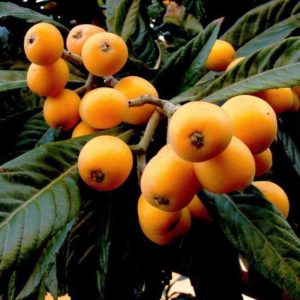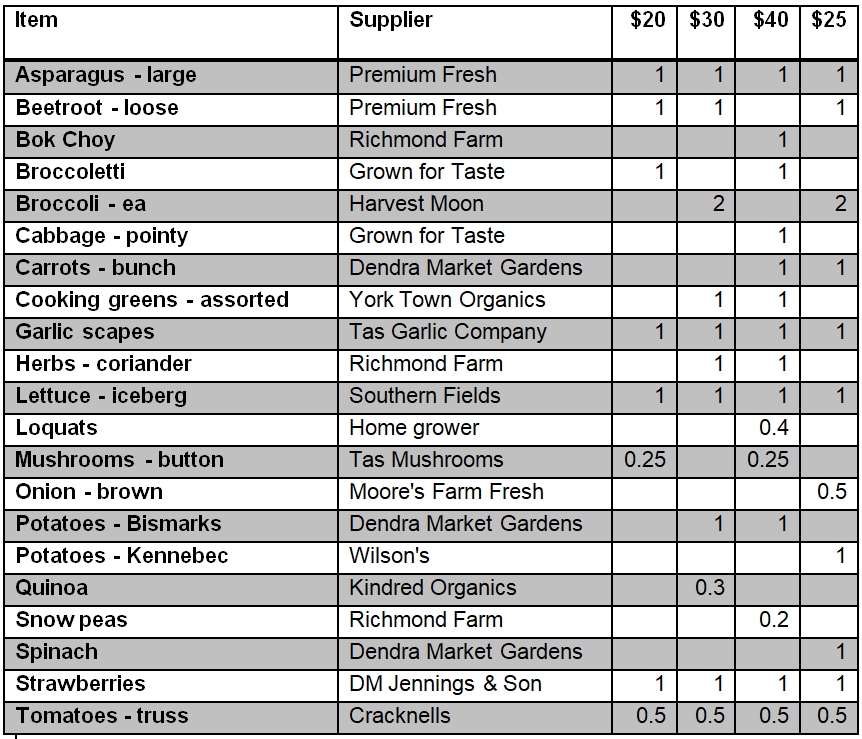 Supermarkets would have you believe that garlic either comes in a jar or as a bulb – thankfully, however, it seems like there’s a growing awareness of the various seasonal stages of a garlic crop. A few weeks back we featured some baby garlic from Bream Creek Community Market Garden – harvested before the cloves had formed in the bulb to avoid loss of the crop due to a disease that had been detected. As the bulb reaches full size, the garlic plant sends up a central stem with a seed head on top – this will form a flower if allowed, but traditionally this part of the garlic plant is cut off before flowering and is known as a scape. The garlic bulb can be harvested at the same time ready for curing, or for eating fresh. This week’s box features scapes from Tasmanian Garlic Company, who are one of the biggest growers of garlic in the state – which is lucky, because every scape in your bunch
Supermarkets would have you believe that garlic either comes in a jar or as a bulb – thankfully, however, it seems like there’s a growing awareness of the various seasonal stages of a garlic crop. A few weeks back we featured some baby garlic from Bream Creek Community Market Garden – harvested before the cloves had formed in the bulb to avoid loss of the crop due to a disease that had been detected. As the bulb reaches full size, the garlic plant sends up a central stem with a seed head on top – this will form a flower if allowed, but traditionally this part of the garlic plant is cut off before flowering and is known as a scape. The garlic bulb can be harvested at the same time ready for curing, or for eating fresh. This week’s box features scapes from Tasmanian Garlic Company, who are one of the biggest growers of garlic in the state – which is lucky, because every scape in your bunch  this week comes from a single garlic bulb!
this week comes from a single garlic bulb!
The Tasmanian Garlic Company – as we discovered on our grower road-trip recently – is actually a partnership that includes David Henderson, who also runs Old School Farm with Kaori around the corner at Preston, growing a whole range of market garden veg. Next week we’re looking forward to giving you a sample of their fresh garlic bulbs, and we’re looking forward to a great year of cured garlic from their farm as well, along with other produce from the Old School Farm side of the business. (These sorts of interconnections are quite common in the thriving farm region of the north-west – David & Kaori also have supplied Premium Fresh in the past and use their drying facilities to cure their garlic when  Premium Fresh aren’t using them for onions – and the diversification of interests reduces the risk of serious financial hardship that can come when a farm puts all its proverbial eggs in one basket.)
Premium Fresh aren’t using them for onions – and the diversification of interests reduces the risk of serious financial hardship that can come when a farm puts all its proverbial eggs in one basket.)
$40 boxes this week receive something else that may be somewhat unfamiliar – a small allocation of loquats from home-grower Paula. These are somewhat similar to plums, although they fruit earlier in the season and have a very different internal seed structure – which you will no doubt discover when you bite into one. They’re best consumed near a bucket, for spitting the pips into – although cooking them with pips in and then running them through a mouli or similar is also an option!

